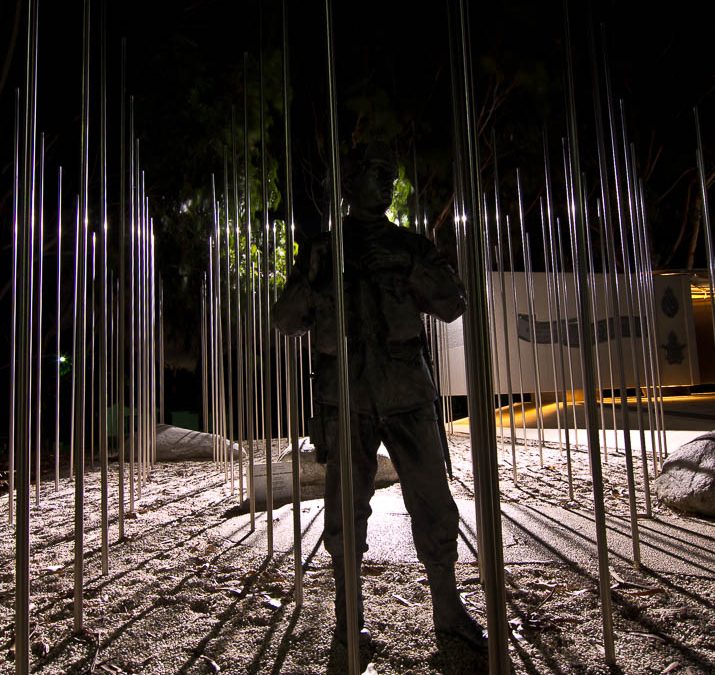The Australian National Korean War Memorial commemorates the 339 Australians who died and honours those who served in the Korean War from 1950 to 1953. On both sides of the Memorial are fields of poles symbolising those Australians who died.
 Simpson and his donkey is one of the well known stories from the First World War. John (Jack) Simpson Kirkpatrick worked tirelessly with a donkey that he found, which he used to rescue about 300 wounded soldiers. He would work all day and into the night bringing the wounded from the front line to the shore, refusing to obey orders and return to his own unit. After just a few weeks at Gallipoli, Simpson was hit by machine gun fire. He was 22.
Simpson and his donkey is one of the well known stories from the First World War. John (Jack) Simpson Kirkpatrick worked tirelessly with a donkey that he found, which he used to rescue about 300 wounded soldiers. He would work all day and into the night bringing the wounded from the front line to the shore, refusing to obey orders and return to his own unit. After just a few weeks at Gallipoli, Simpson was hit by machine gun fire. He was 22.
Sir Edward ‘Weary’ Dunlop (12 July 1907 – 2 July 1993) was an Australian surgeon who was renowned for his leadership while being held prisoner by the Japanese during World War II. A courageous leader and compassionate doctor, he restored morale in the terrible prison camps and jungle hospitals. Dunlop defied his captors, gave hope to the sick and eased the anguish of the dying. He became, in the words of one of his men, “a lighthouse of sanity in a universe of madness and suffering”. His example was one of the reasons why Australian survival rates were the highest.
 One photo shows the view from the front of the Australian War Memorial, looking down Anzac Parade to Parliament House in the distance. Walter Burley Griffin (Canberra’s designer) certainly left a great legacy here.
One photo shows the view from the front of the Australian War Memorial, looking down Anzac Parade to Parliament House in the distance. Walter Burley Griffin (Canberra’s designer) certainly left a great legacy here.
 The Australian Vietnam Forces National Memorial was completed in 1992. The monoliths were inspired by ancient standing stones, and contained within the circle suspended above are the names of those Australians who died in the Vietnam War 1962 – 1973. It’s certainly a beautiful and very haunting reminder of their sacrifices.
The Australian Vietnam Forces National Memorial was completed in 1992. The monoliths were inspired by ancient standing stones, and contained within the circle suspended above are the names of those Australians who died in the Vietnam War 1962 – 1973. It’s certainly a beautiful and very haunting reminder of their sacrifices.












